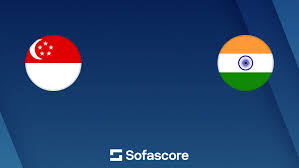Singapore vs India: Cultural, Economic, and Educational Insights

Introduction
The comparison between Singapore and India has garnered significant interest, particularly in terms of economic growth, cultural diversity, and their respective educational systems. Both nations represent unique paths of progress in Asia, each with its own strengths and challenges. Understanding the implications of these differences is essential for stakeholders, investors, and policymakers.
Economic Landscape
Singapore has established itself as a global financial hub, with a GDP per capita that is among the highest in the world, hovering around USD 65,000 as of 2023. The economy is characterized by high-value industries such as finance, electronics, and biotechnology. In contrast, India’s GDP per capita stands at approximately USD 2,500, showcasing its status as a developing economy with vast potential. The Indian economy is driven by agriculture, manufacturing, and a burgeoning IT sector, making its growth story one of emerging markets.
Cultural Diversity
The cultural landscape of both nations is distinct. Singapore is known for its multicultural environment, where Chinese, Malay, Indian, and other ethnicities coexist. This diversity fosters a rich tapestry of traditions and festivals, contributing to the country’s overall charm. India, on the other hand, is a vast country with an even wider range of cultures, languages, and religions. India’s festivals and cultural practices vary significantly from region to region, which adds to its historical richness but also challenges in terms of unity and governance.
Educational Systems
Education in Singapore is often lauded for its rigor and efficiency, consistently ranking high in international assessments like PISA. The government invests heavily in education, focusing on STEM (science, technology, engineering, and mathematics) abilities. Meanwhile, India’s education system faces challenges with quality and access, despite its large pool of young talent. The diversity of educational institutions and vast differences in quality can result in a significant gap between urban and rural education.
Conclusion
In summary, while Singapore and India both represent vital economies in Asia, they embody different strategies for growth and development. Singapore’s status as a developed nation is contrasted by India’s fast-growing emerging market characteristics. The future for both countries holds promise; Singapore continues to innovate and expand its economic base, while India aims to leverage its demographic dividend to accelerate growth and better quality of life for its citizens. These dynamics are not only significant for their respective nations but also for global economic trends in the coming decades.









